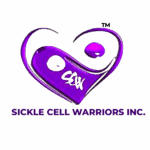This article is from the medical journal ED Nursing printed July 1st, 2007. I’m putting it on here so that more medical professionals can see that it’s not wrong to treat sickle cell patients properly. The most pertinent parts for me will be in bold. Hola at Dr. Tanabe for hitting the nail on the head and standing up for sickle cell patients. I would love to meet the good doctor in person and just say THANK YOU! Please spread the word.
Stop delays in treatment of sickle cell pain patients
Believe what the patient tells you
Imagine being in horrible pain and knowing exactly what medication you need to control it, coming to an ED . . . and waiting an hour and a half for relief. Researchers recently looked at 612 patient visits for sickle cell disease (SCD) having an acute pain episode, and they found that took an average of 90 minutes for administration of an initial analgesic.
Emergency clinicians often perceive patients to be drug seeking, says Paula Tanabe, PhD, RN, the study’s lead author and research assistant professor in the department of emergency medicine at Northwestern University in Chicago. “Nurses must begin to believe the patient,” says Tanabe. “Patients with sickle cell disease do not want to come to the ED. By the time they do, they have exhausted all other interventions under their control.” (Anonymous RN, please take note)
Provide better care to patients with SCD by increasing their personal knowledge base of the pathophysiologic complications and course of the disease, advises Tanabe. “ED clinicians receive very little education about sickle cell anemia. Until recently, the average age of death was in the 40s,” she says.
SCD is a serious chronic disease often associated with many serious physiologic complications including strokes, acute chest syndrome, pulmonary complications, and acute pain episodes, says Tanabe. Two common mistakes are making wrong assumptions about the severity of their pain and not being aggressive enough in managing it, says Kathleen A. Delaney, MD, vice chair of the Division of Emergency Medicine at the University of Texas — Southwestern Medical Center at Dallas. “Sometimes they don’t look like they’re in pain because they are chronically in pain,” she says. “There is no particular test that tells us whether they are having a crisis or not. We need to accept what the patient is saying and treat the pain aggressively.”
To improve care of SCD patients, do the following:
• Develop an individual care plan for patients:“All patients deserve excellent pain management,” says Tanabe. For patients with frequent visits to your ED, create an individual care plan with them, ED clinicians, and the patients’ primary care provider, advises Tanabe. Emergency nurses can be important members of teams to establish individual patient care plans that outline analgesic management specific to each patient, she adds.
• Assign a high triage score: The study showed that a low triage score was the strongest predictor of long waits to receiving an initial analgesic. Rapid and aggressive analgesic management has been associated with decreased need for hospitalization, says Tanabe. “At a minimum, it is important to assign the correct high-priority score and do whatever possible to facilitate placement in a treatment space,” Tanabe says.
• Do a thorough assessment: Don’t make the mistake of assuming this is “just another pain episode,” warns Tanabe. Patients often present with chest pain that may indicate acute chest syndrome, which is associated with high mortality, and other-life threatening complications include sepsis and stroke, she says.
Often patients with SCD are labeled as “difficult” or “drug-seeking,” says Tanabe. “Emergency nurses can help contribute to softening this attitude,” she says. Ask patients these questions: What methods did you use to control your pain at home? When did the pain episode begin? Where is the pain? Is this typical of your pain episodes? Do you require transfusions? When was the last time you were transfused? Do you have a health care provider that you see on a routine basis? What analgesic agents are usually effective to decrease your pain in the ED? How many and what doses?
“Typically, we are very impressed when patients can remember their medications and doses,” says Tanabe. “The same should be true for patients with SCD.”
• Do frequent reassessment of pain after analgesic administration: This reassessment can help achieve rapid pain control and help decrease the need for hospitalization, says Tanabe. “Additional doses should be provided within five to 10 minutes,” she says. (I wish this was the case!)
• Be concerned about infection: SCD patients are susceptible to multiple bacterial infections including salmonella and pneumococcal sepsis, warns Delaney. “They develop infarctions of their spleen, so they are essentially asplenetic,” she says. “They should get pneumococcal vaccine, which is not usually done in the ED — but sometimes we act as their primary care doctors.”
Reference
*Tanabe P, Myers R, Zosel A, et al. Emergency department management of acute pain episodes in sickle cell disease. Acad Emerg Med 2007; 14:419-425.
